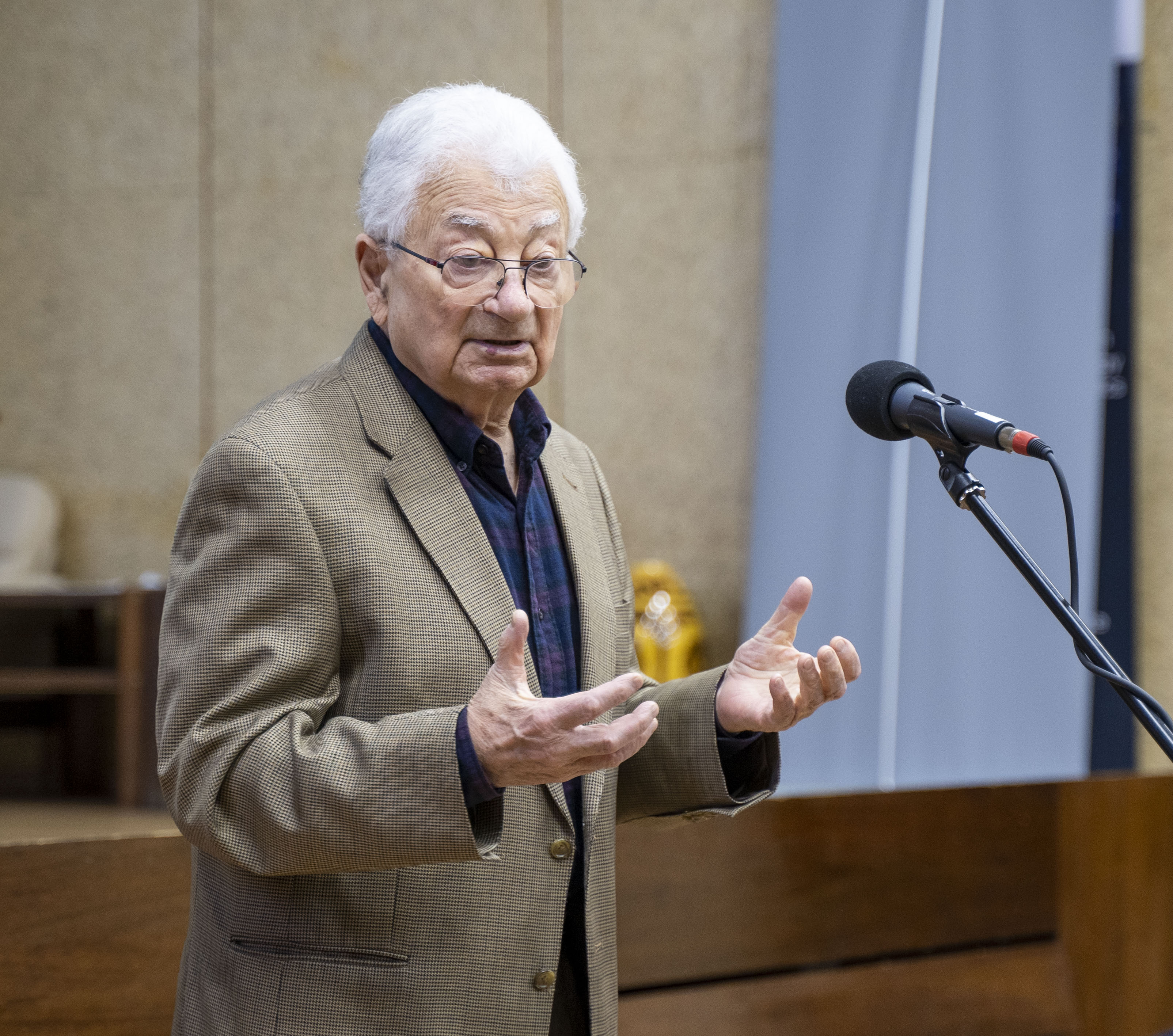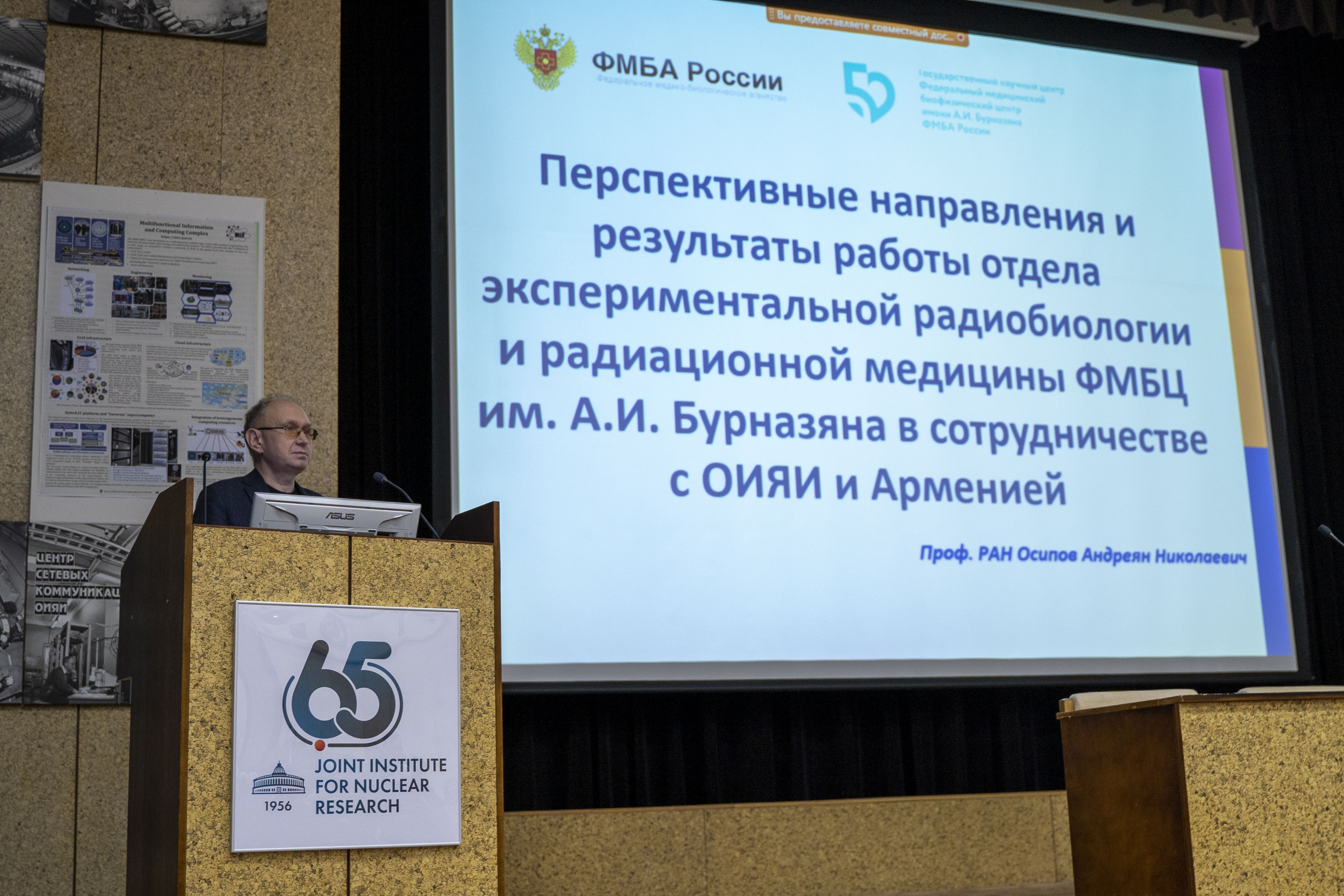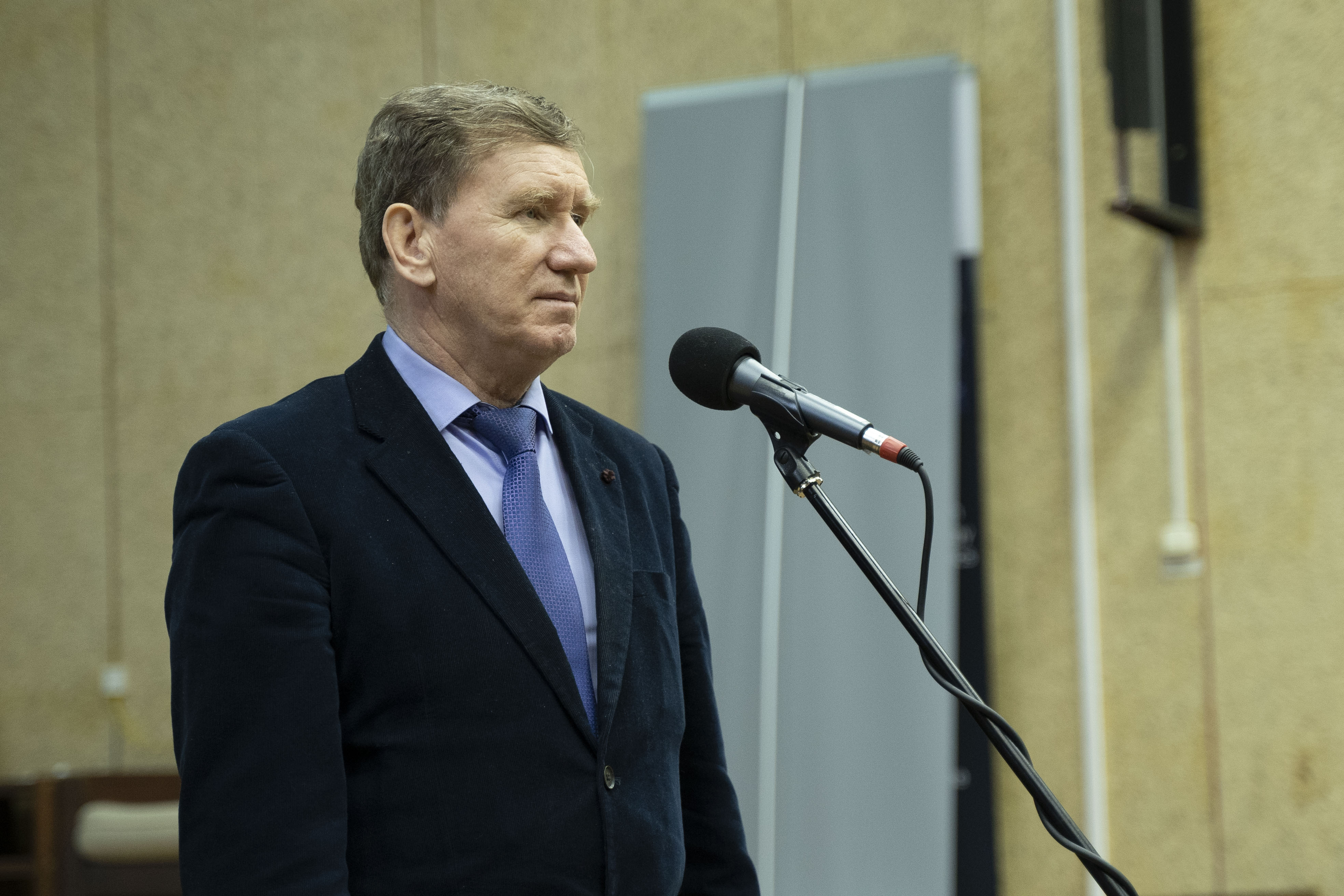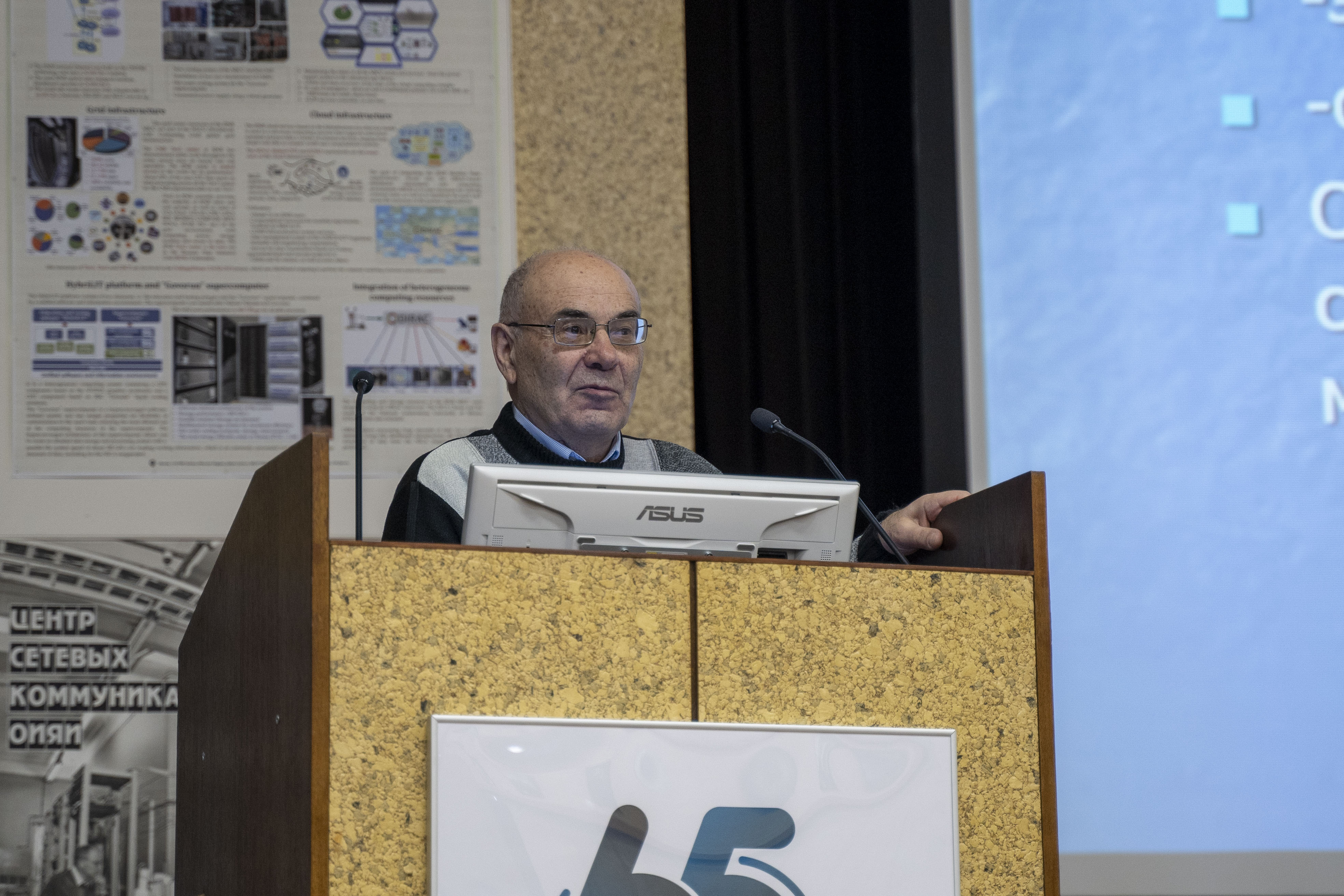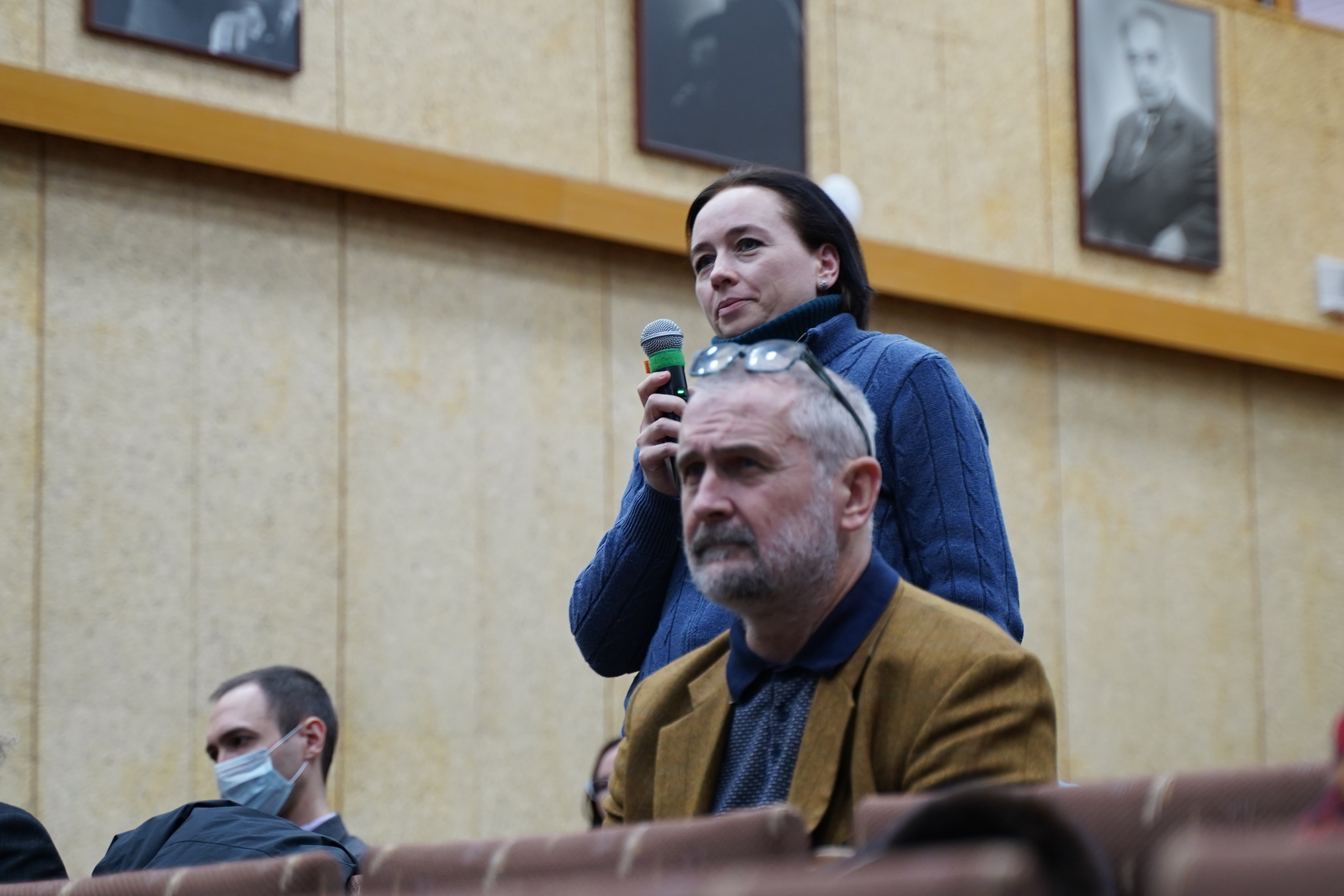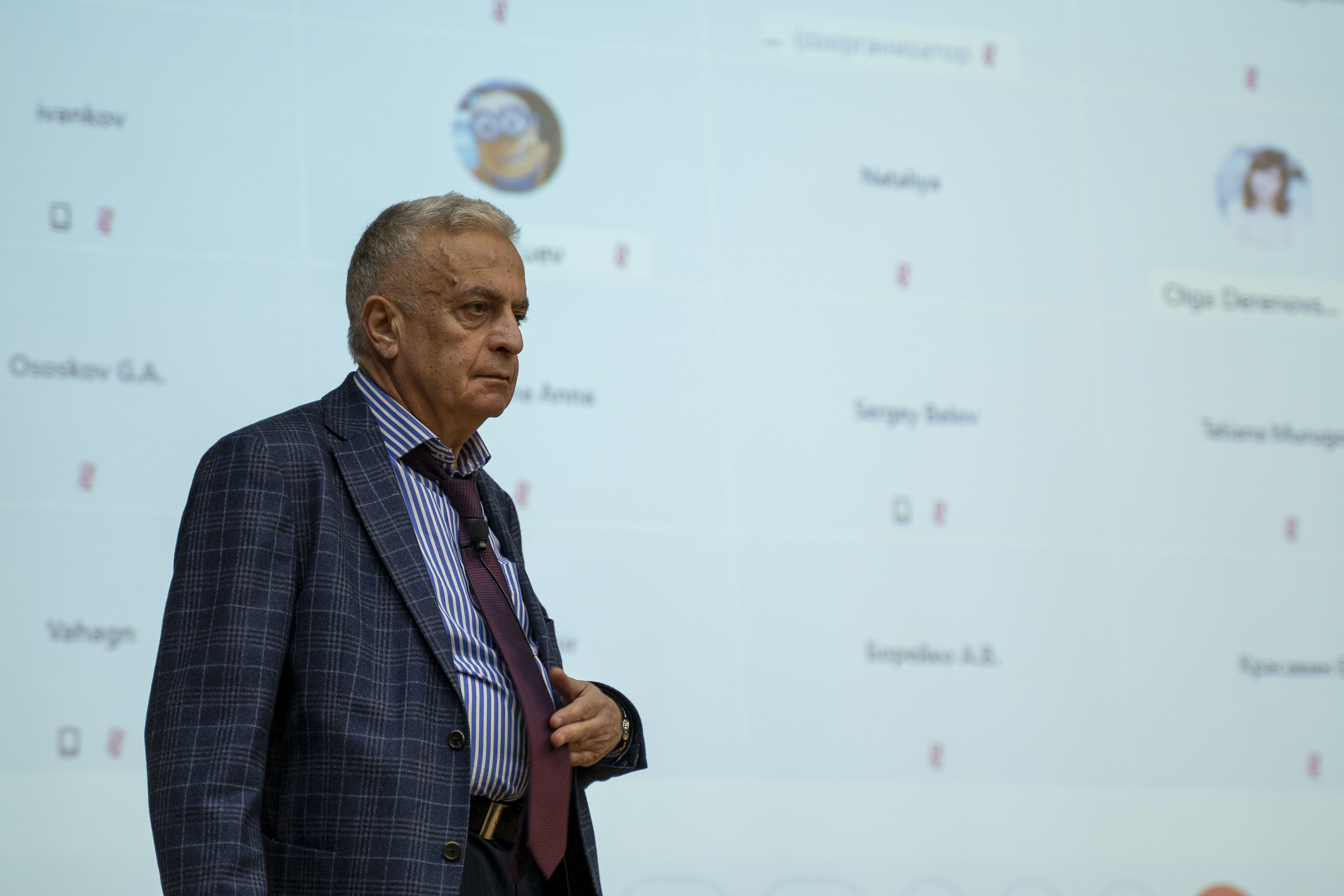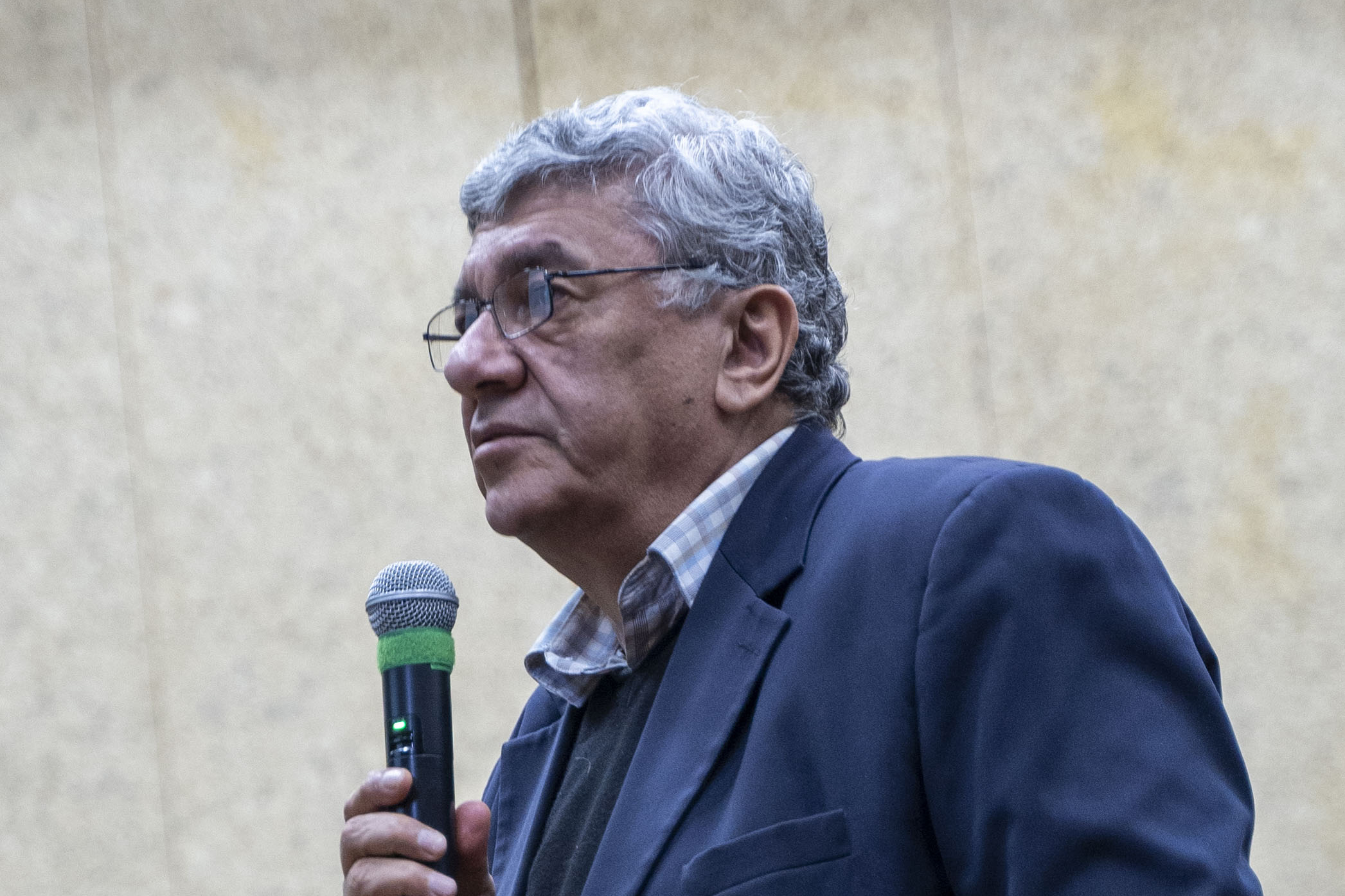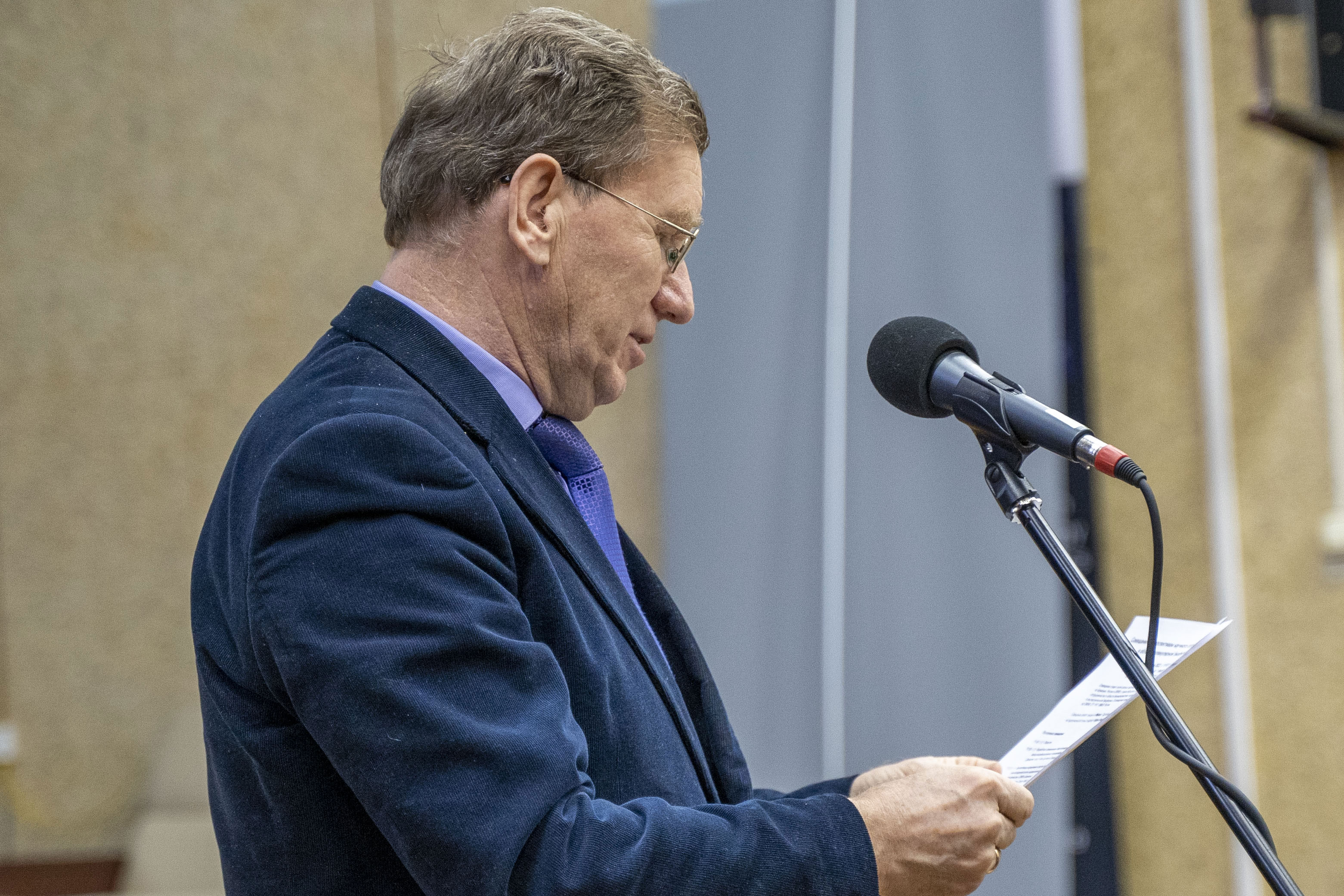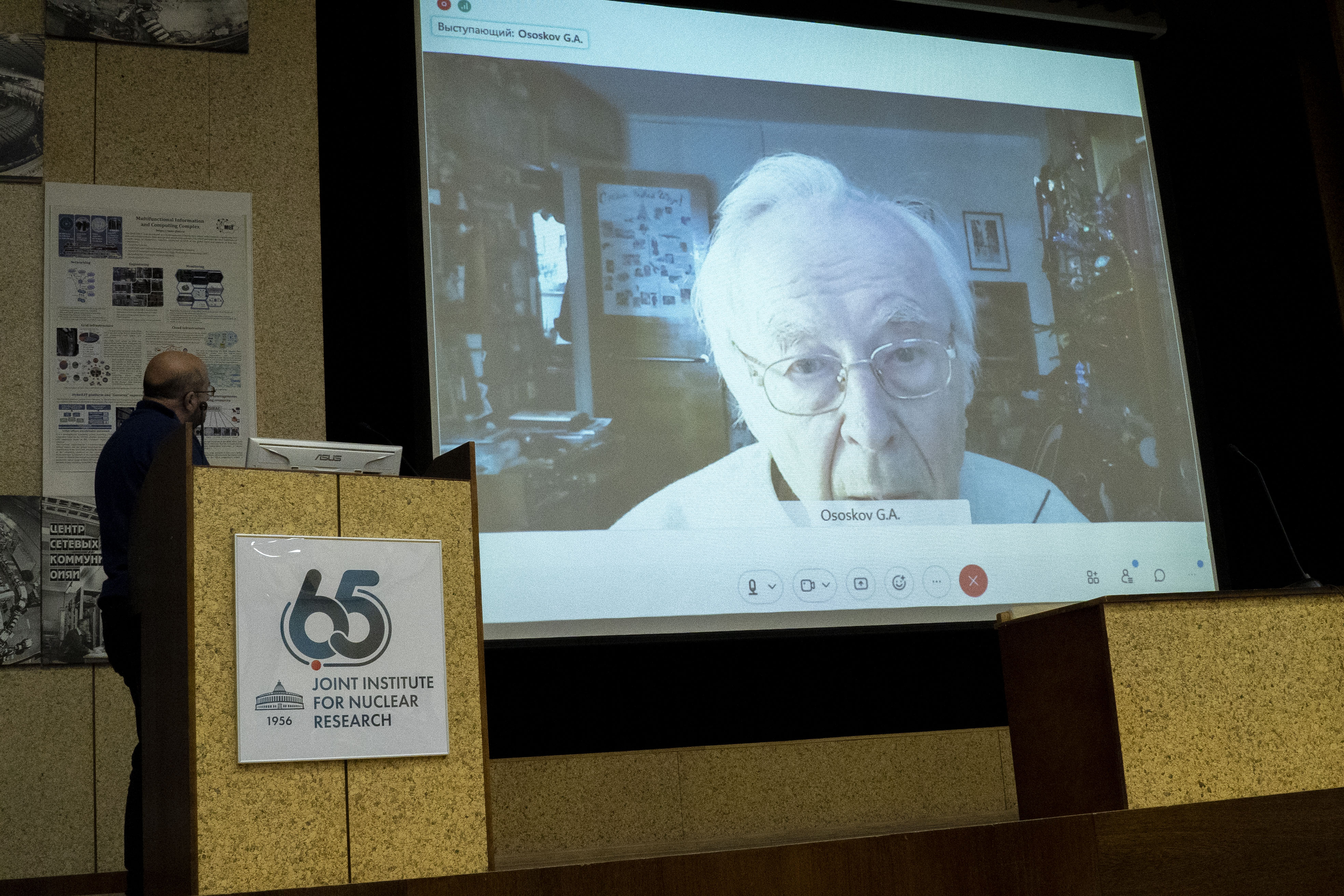Uniting efforts
News, 03 February 2022
On Friday, 28 January 2022, scientists from JINR, Russia, and Armenia had a meeting on prospects for scientific cooperation in the fields of bioinformatics, molecular and computational biophysics in a hybrid format at MLIT JINR. Before the meeting, President of the National Academy of Sciences (NAS) of the Republic of Armenia A. S. Sagyan visited Dubna. The President met with Academician G. V. Trubnikov and Academician Yu. Ts. Oganessian, visited a number of JINR laboratories, discussed more active cooperation between Armenia and JINR divisions.
The initiator of the meeting was FLNR Scientific Leader Yu. Ts. Oganessian who also opened it.
“The pandemic continues. How long do we have to live with the coronavirus? Probably, for a long time, that’s why we need to settle our life. JINR has strong scientific cooperation with Italy, which has been the first country that suffered from the coronavirus. I asked Italian colleagues if we could use our membranes aimed at purification from bacteria in the fight against viruses. Our suggestion attracted them. A group of European researchers gathered in Naples, but the trouble came much faster. Technologies developed at FLNR allow producing hundreds of thousands of square metres of membranes per year, making pores of different shapes in them. But the biological part remains open, it should be discussed.”
“It is a great honour for me to be at JINR, and it is twice more respectful to get the invitation from Yuri Tsolakovich,” R. M. Harutyunyan (National Academy of Sciences of Armenia, Yerevan State University) began his speech. “I am thankful to G. V. Trubnikov, V. V. Korenkov, and S. G. Harutyunyan for the opportunity to share our developments. In the report “Development and application of ligand-modified nanomembranes in biological research”, I will talk about what we can do. Colleagues from FMBC and RAU will share their developments. And how to fold the puzzle is the issue of our future discussion.”
R. M. Harutyunyan in his report presented the results of four directions of scientific research on nanoparticles and nanomembranes conducted in Armenia. They are the use of membranes for fast identification and quantification of various extracellular DNA types, the application of the protective/filtering effect of nanomembranes using model viruses, the development of nanopatches as multicomponent controlled systems for effective wound healing, the development and the use of nanopore membranes modified with bacteriorhodopsin to generate electricity from sunlight.
A. N. Osipov (Burnasyan Federal Medical Biophysical Centre of FMBA of Russia) in the report “Promising directions and results of the work of the Department of Experimental Radiobiology and Radiation Medicine of FMBC in cooperation with JINR and Armenia” presented the main activities of the department and progress made in studying the formation mechanisms of short and long-term effects of ionizing radiation and the development of prevention methods, diagnosis and treatment of radiation injuries. Specialists of the department have developed a number of radioprotective drugs in case of radiation incidents for the personnel at radiation-dangerous facilities and people living in the vicinity of the targeted facilities. Specialists have developed medical protectors to arrest the primary reaction to irradiation. A. N. Osipov spoke about fundamental differences in the work of DNA double-strand break repair in human blood-derived cells exposed to acute and prolonged exposure to ionizing radiation. In recent years, specialists of the department have developed software for automatic analysis of DNA double-strand break repair foci, DNA comet staining for conventional bright-field microscopy, as well as new research methods in molecular biology and microbiological control.
A. N. Osipov gave a summary of the RSF grant results on studying the cellular and molecular effects of ultrashort pulsed radiation in vitro as an example of successful Armenia-Russia cooperation. Moreover, the speaker presented prospects for further research on the antitumour efficiency of ultrashort pulsed radiation in vivo with access to preclinical studies.
He marked that there is no experience of trilateral FMBC-JINR-Armenia cooperation, but there are potential areas for joint research, including the study of longevity in the Caucasus under conditions of increased background radiation. A. N. Osipov took an interest in MLIT’s potential since nowadays methods of radiation dosimetry are under-automated, a huge amount of data is processed manually. Machine learning and artificial intelligence algorithms would be very helpful in this area.
V. B. Arakelyan (Yerevan State University, Armenia) presented the report “Stability and conductivity of bilayer lipid membrane” at the meeting. He reviewed approaches and models of membrane stability, as well as experimental data indicating a membrane losing its stability in the electric field practically without any deformation. He offered a mechanism of bilayer lipid membrane (BLM) stability in the electric field based on the idea of spontaneous occurrence of microscopic pores in BLM. The speaker gave a thermodynamic description of pore formation process in the electric field, considered the influence of the number of pore formation stages on the average lifetime of the membrane. The development of pores leads to the loss of BLM stability. Such pores provide background BLM conductivity. The radial ion energy profile in a cylindrical channel was calculated. It allows evaluating the channel selectivity to different types of ions.
Y. Sh. Mamasakhlisov (Russian-Armenian University, Armenia) presented the report “Translocation of biological macromolecules in limited space areas”. The speaker considered the kinetics of the dsDNA polyanion passage in external electrostatic field through a sequence of slits of different widths, representing “entropy traps”. Y. Sh. Mamasakhlisov studied the kinetics and scaling behaviour of the chain at the exit from the entropy trap. It was shown that the exit process from an “entropy trap” has two kinetic stages with different time scales. The possible influence of surface irregularities on the kinetics of the exit is being discussed. There is a possibility of applying the described approach to the task of macromolecules translocation through a synthetic track membrane array.
Director of the Institute of Molecular Biology (IMB) of the National Academy of Sciences of the Republic of Armenia (NAS RA) A. A. Arakelyan, employees of JINR laboratories participated in the meeting online.
After the meeting, the discussion continued under the direction of Yu. Ts. Oganessian at FLNR. During the discussion, participants made decisions on further actions to consolidate the biological research role in the membrane theme. Specific dates for the submission of relevant projects were set. A. N. Osipov and JINR Directorate Advisor S. G. Harutyunyan will coordinate the future programme.
It was decided to hold the second meeting on the membrane theme in April in Yerevan. The final tasks with relevant time, material and technical, personnel, and financial criteria will be specified and formulated. Possible funding sources will be also identified for the successful theme implementation.
